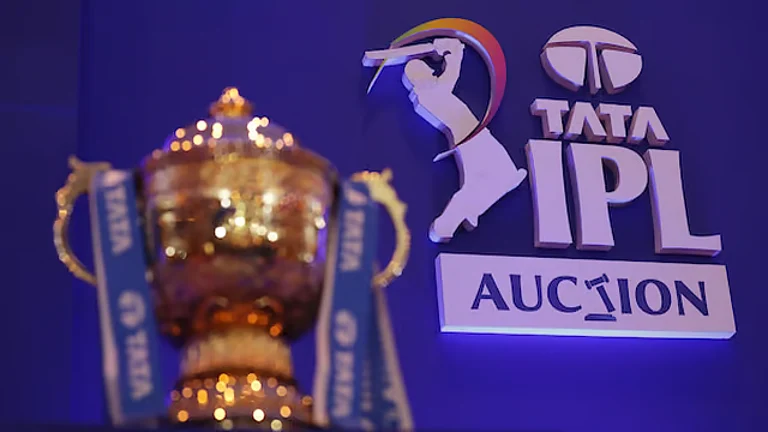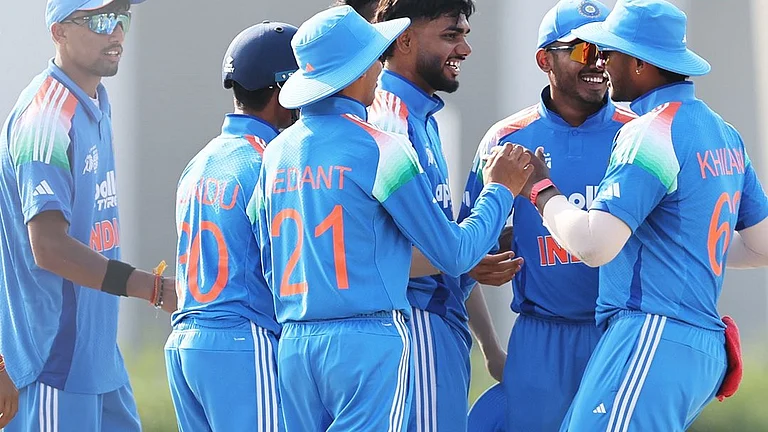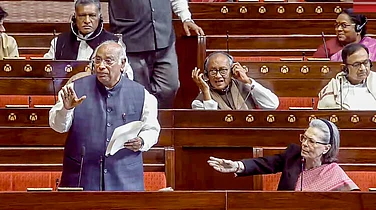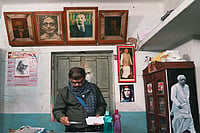The Scheduled Castes and Scheduled Tribes (Prevention of Atrocities) Act, 1989 and Rules 1995 were brought in to ensure legal safeguards for scheduled castes (SCs) and scheduled tribes (STs) against untouchability and discrimination. While the provisions are commendable, its implementation is a different story.
Dalit Human Rights Defenders Network (DHRDNet), along with the Human Rights Law Network (HRLN) and National Council of Women Leaders (NCWL), undertook a study to understand the implementation —or lack thereof— of the law in 15 states. The study is based on government data available in the public domain and by filing Right to Information (RTI) applications in different offices. The organisation publicly released the report on March 10 Vishwa Yuvak Kendra, New Delhi.
The SC/ST Act is an extension of legislation brought in upon India gaining its Independence in 1947. Drawing upon his own as well as the experiences of others concerning caste-based discrimination, Dr BR Ambedkar sought to provide a legal solution to the issues which lie at the core of the anti-caste discourse. Including Article 15, which prohibits discrimination on the grounds of caste, and Article 17 which abolishes untouchability, the values of dignity and security from oppression became enshrined in the Constitution of India. The Constitution further enforced these ideas through the Untouchability (Offences) Act (UOA) 1955, which placed the burden of proof on the accused.
However, this Act was proven insufficient to deal with caste-based discrimination, which led to the UOA Act being amended and renamed in 1976 to form the Protection of Civil Rights (PCR) Act, 1955. The PCR Act had a holistic approach to dealing with caste-based hate crimes. It included the formation of special courts, provision of legal aid, skeletal mechanisms for implementing the Act, and prevention of caste-based crimes, and stricter punitive punishment for discriminatory violence.
Unfortunately, the PCR Act suffered even with the various amendments introduced in 1976 as it failed to define the contours of caste-based crimes adequately. There were reports of atrocities and massacres, but the government response was palliative, seldom focusing on addressing the root causes of these crimes.
Eventually, activists, leaders, and political representatives from Dalit communities pressured the government into bringing a new legislation which could be capable of comprehensively defining the economic, social, physical, verbal, religious, and other structural violence being committed against SC and ST population of the country.
The SC/ST PoA Act, enacted in 1989 and implemented through Rules adopted in 1995 defined 22 atrocities, ranging from contaminating water to violence, with specific punitive action for each crime. In 2015, the number of offences recognised under the Act increased to 47. The addition included the following:
● Manual scavenging.
● Forcibly tonsuring heads and shaving moustaches.
● Forcing SC/ST individuals to dispose of animal carcasses.
The findings of the study are rather startling but not unsurprising. Between 1991 and 2021, crimes against the SC and ST communities rose by 177.6 per cent and 111.2 per cent respectively. Furthermore, the rate of violent crimes against the SC/ST communities and crimes against women from SC/ST communities, compared to overall crime rates, increased between 2017 and 2021. While crimes against women and women’s safety have been growing concerns, women from the SC/ST communities are disproportionately affected for the worse.
Manjula Pradeep, the campaign manager at DHRDNet and National Convenor of NCWL, says, “Women from these two communities are vulnerable due to their social identity, which intersects with caste, ethnicity, class, and gender. They are perceived as weak and used as a weapon to shame and punish the scheduled castes and ccheduled tribes when they assert their rights.”
When the disproportionate rate of sexual violence against women from the SC/ST communities is brought up, there are often complaints about how it must be seen as gendered violence only and that mentioning the victim’s caste does not make sense. However, the Regional Coordinator Assistant in Gujarat for DHRDNet, Preeti Vaghela, says, “If a Dalit woman is the victim of a crime, then her caste identity is integral. In villages, dominant caste people consider it their inalienable right to violate Dalit women and also threaten a social boycott of them and their family if they file a complaint, going as far as to threaten that they will be thrown out of the village.”
Bihar, Madhya Pradesh, Rajasthan, and Uttar Pradesh account for only 36 per cent of the nation’s total population, but these states disproportionately register two-thirds of all crimes recorded against the SC/ST communities. Surprisingly, even with the stark increase in crimes against the SC/ST communities, only 12 states and one union territory have declared atrocity-prone areas. Uttar Pradesh is yet to declare one.
Even though the recent amendment emphasised the establishment of Exclusive Special Courts and appointing Special Public Prosecutors to reduce the pendency of cases and increase convictions, DHRDNet’s analysis of government data and information obtained through RTI highlights the lacunae in the implementation of these provisions. For example, on average, cases in Madhya Pradesh remain pending for four years. In Bihar, a special court barely does anything to improve the conviction rate, which remains as low as 4.79 per cent.
Furthermore, DHRDNet’s research report also finds that the exclusive courts do not exclusively attend to atrocity cases but other cases. In some courts, other instances are prioritised over atrocity cases. In Gujarat and Karnataka, the exclusive courts have overwhelmingly had more hearings for non-atrocity cases than those covered under the SC/ST PoA Act. Many trials are delayed due to state prosecutors presenting evidence with a delay.
Data also notes the overburdening of state prosecutors appointed to deal with cases under the PoA Act. Another essential factor of the SC/ST PoA Act is granting the right to appeal judgments. Still, only 6.69 per cent of cases were appealed in higher courts. Therefore, the road to justice for individuals from SC/ST communities filing lawsuits under the PoA Act is unfortunately closed. Vaghela further says that the police forces tend to be more receptive when a case is filed under the IPC, in contrast to SC/ST PoA Act.
She says, “We have to create awareness among SCs and STs regarding the SC/ST PoA Act to use it extremely carefully, only when there is no other recourse, such as usage of casteist slurs. When we feel it may not be useful, then we use IPC as it will be more favourable as the police forces are more responsive towards cases filed under IPC rather than the PoA Act.”
The Act also recognises the economic aspect of caste-based crimes, which is why governments are obligated to compensate and rehabilitate victims. However, based on DHRDNet’s analysis of RTI responses, we can comprehend the ineffectiveness of the social welfare departments of various states since there is a considerable variation between states on average compensation given. According to the Act, the first tranche of payment must be released within seven days. Data reveals that it is done in under 10 per cent of the cases. Out of 15,935 victims in Madhya Pradesh, not a single victim given compensation received it in time. In Uttar Pradesh, out of 47,851, only seven victims received payment within a week — a shocking 0.014 per cent.
The RTI responses further reveal that the victims do not receive compensation at the second —after the charge sheet is filed— and the third stages — after conviction. Even travel and maintenance costs are less likely to be provided to victims, their dependents, and eyewitnesses, both of which are mandated by the SC/ST Act to cope with the costs of lengthy trials. In cases where the expenses are received, the amount is abysmally low.
The report also makes recommendations for the correct implementation of the law and delivery of timely justice to the victims. Even with legislation as complete as the SC/ST PoA Act, it becomes challenging to ensure fairness owing to institutionalised biases against the marginalised communities.
Dr B.R. Ambedkar rightly pointed out: “Democracy in India is only a top dressing on Indian soil, which is essentially undemocratic.”
The only way to ensure justice is for proper implementation of the PoA Act and monitoring the status of all the cases, along with corrective measures in case of obstructions due to any reason whatsoever. The report makes the following recommendations:
1. States must identify Atrocity-Prone Areas within their jurisdictions. The authorities must develop standardised methodologies for states to identify these areas.
2. Sensitisation training to police officers on the perspective of caste and gender, provisions of the SC/ST, PoA Act.
3. To deal with delays in charge sheets getting filed, regular quarterly monitoring must be done so that they get filed within 60 days.
4. Reasons for the delay must be stated, investigated, and corrected.
5. The number of special officers or investigating officers must be increased.
6. Immediate action to improve conviction rates.
7. Special and exclusive courts must prioritise hearings of atrocity cases to expedite trials.
8. The respective departments should fill vacancies for special and exclusive public prosecutors. The authorities must recruit additional prosecutors in places with high pendency and low conviction rates.
9. Expedite action to provide compensation and keep to the provisions in the Act.
10. Proper recording of compensation provided in terms of first, second, and third phase.
11. Follow up on compensation and rehabilitation measures for victims/dependents/survivors till the final verdict.
12. Enhance travel allowance, compensation for self-employment, and pensions.
(Ankush Pal is an undergraduate student of sociology at Jamia Millia Islamia, New Delhi. He studies and writes about the intersections of various identities, the power structures they operate within and perpetuate, and hegemonic narratives.)





















